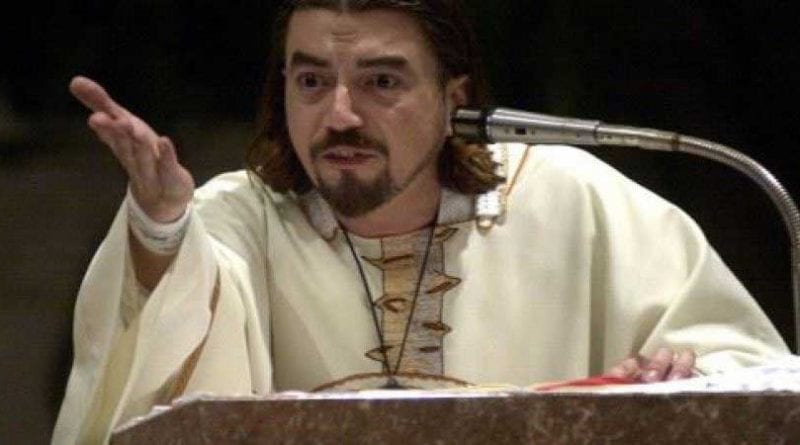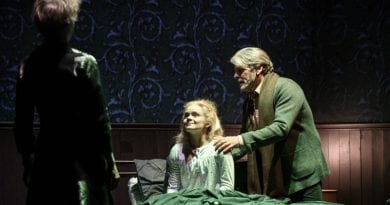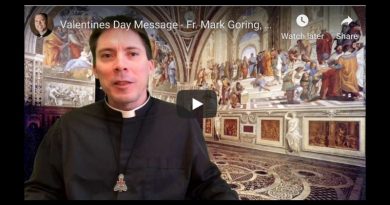Medjugorje: Sudac the Mysterious …”Which one is he, someone in the church asked …There, the one that looks like God.”
(Secular Press Originally Published in “New York Magazine”)
Sudac the Mysterious
The bleeding markings on the wrists and feet of Croatian priest Zlatko Sudac have made him an ecclesiastical superstar. He usually doesn’t display them — but have faith.
“Which one is he?” asked the 70-year-old lady from Yonkers. Near blind, seeing “only gray shadows,” she had come to the St. Athanasius Church on Bay Parkway in Bensonhurst on this rainy, windswept evening, hoping to be healed.
“The one in the purple vestments,” said the lady’s companion, who was leaning on a cane. “The one who looks like God.”
Truly, there was no mistaking the singular presence of Father Zlatko Sudac. He sat in a velvet-covered chair to the right of the altar. Moments before, the 31-year-old Croatian priest, russet shoulder-length hair pulled away from his pasty complexion, had spoken of the unsurpassed joy of devotion, but now his thick brows arched above mournful brown eyes; everything about his frail frame suggested an otherworldliness of suffering.
“Can you see it?” the half-blind woman asked her companion.
“Yes. On his head . . . I see . . . a notch,” replied the second old lady, squinting hard.
This much was visible: an indentation perhaps an inch long, like a coin slot, in the middle of Sudac’s (pronounced SOO-dots) wide, flat forehead. It could be the horizontal plane of a cross, which, it is said, Sudac first “received” in May of 1999. This was followed the next year by bleeding markings on his wrists, feet, and side.
These were the outward signs that the former philosophy student from the Adriatic island of Krk had received the mystical stigmata: wounds corresponding to those suffered by Christ on the cross.
Amid the church’s appalling sexual scandals, news of Sudac’s stigmata has been cause for tentative celebration. The most celebrated stigmatic since the revered Padre Pio (the Italian priest who received the wounds of Christ in 1918 and will be officially canonized this June), Sudac, who came here from Croatia last fall, has become the hottest ecclesiastic ticket in town. At St. Athanasius, four hours before the beginning of the Mass, 2,000 people were standing on line in the rain, hoping to get inside lest they be shuttled off to the auditorium across Bay Parkway and have to hear the service on closed-circuit.
As church officials say, “No church is big enough for Sudac now.” Two weeks earlier, 300 people, unable to fit inside Immaculate Conception Church on Gunhill Road in the Bronx, huddled on the church steps in a sleet storm, listening to the Mass on a loudspeaker. Two Masses at Our Lady of Pompeii in Greenwich Village attracted nearly 4,000 people. At St. John the Baptist in Paterson, New Jersey, fire marshals attempted to clear the seriously overcrowded room, leading one firefighter to say with a sigh, “Burning buildings is one thing, but throwing people out of Mass? That’s not how I was brought up. Especially now . . .”
Especially now. It was no surprise God had chosen this particular time, in the neo-apocalyptic wake of 9/11, to send a messenger like Father Sudac, said Pat F., a fortyish typist who had driven down from Peekskill. The world was a mess, said Pat, always a “good Catholic” even in her punk-rock phase. People had deluded themselves into thinking TV-inspired materialism, the rat race of work, and relativist ethics were the actual state of things, Pat said. It was like The Matrix, where evil, soulless computers generate “fake reality” and humankind is either too beaten down or too “plain lazy” to do anything about it.
“Nine-eleven changed that,” Pat said. Like Oz, 9/11 “punched a hole” in the cheap curtain. Nine-eleven made it clear that pop culture and “the rest of what they hand you is not cutting it.” Bush’s version of “political good and evil” was just more confusion. The real battle was between God’s truth and men’s lies. That was the value of people like Sudac. Pat said that he showed “a way to see through to the real truth.”
The first known receiver of the mystical stigmata (The Catholic Encyclopedia cites 321 recognized cases) was Saint Francis of Assisi, afflicted while in deep prayer on Mount Alverna in 1224. Suddenly, according to Felix Timmermans’s often-quoted retelling, “it was as if the heavens were exploding and splashing forth all their glory in millions of waterfalls of colors and stars.” Inside the “whirlpool of blinding light” was Jesus on a fiery cross, his wounds like “blazing rays of blood.” Like a “mirrored reflection,” Jesus’ fiery image “impressed itself into Francis’ body, with all its love, its beauty, and its grief.” Then, “with nails and wounds, through his body, his soul and spirit aflame, Francis sank down, unconscious, in his blood.”
Sudac, whose wounds have been declared “not of human origin” by Vatican doctors at the Gemelli Clinic in Rome, is somewhat less dramatic when discussing his holy affliction. It happened at “a friendly get-together in one family’s home,” the priest says in his only interview available in English (given soon after his initial stigmatization). Unspecifically noting that the wounds imbued him with “a tremendous fear of the Lord,” Sudac says he suffers little pain from the stigmata, except when he is praying. “Then I feel it pulsing,” he reports. “On first Fridays . . . it’s known to bleed and leak as though it is crying.”
Other marvels Sudac received along with stigmatization include “gifts of levitation, bilocation, and knowledge of upcoming events.” Of these, bilocation, the ability to be in two places at once, is particularly “interesting,” Sudac says. “You have the feeling that you are at one place, but your heart and imagination want to be somewhere else.” The priest says he wouldn’t have believed he’d been in two places at the same time until “some people had come forward and confirmed it all.”One would like to engage Sudac, to discuss why he doesn’t bleed to death. Or whether his wounds smell like roses and tobacco, as Padre Pio’s were said to. But Sudac does not speak English and is not currently talking to the press.
Nor does Sudac display the stigmata at his Masses, a fact that does not seem to bother many of the people on line in the rain outside St. Athanasius. A young Caribbean woman who described herself as a “black Catholic” says, “What’s in it for you to say it isn’t so?” It was a question of faith, people on line agreed. St. Athanasius is still an Italian parish, but Russians have moved in, Mexicans and Filipinos, too. Outside is the usual New York babel, half a dozen languages and accents, from wherever Roman Catholics came in black robes and conquistador armor. Tom, an Eastern European–born postal worker, says these various ethnicities will matter little tonight. Of course, Father Sudac would appear to be talking in Croatian, but actually his words would be uttered in “another tongue altogether.” It was something he’d come across in this reading, Tom said. Stigmatics, due to their special relationship with God, often entered a meditative state in which they could “communicate” with others bearing the wounds of Christ. Since more than 60 saints have borne the stigmata, Tom said, there was every reason to believe that Sudac would not simply be speaking for himself.
Sudac would be speaking the universal language of Saint Francis, Saint John of God, and Saint Catherine of Siena, and Saint Catherine de’ Ricci, and Saint Clare, and Padre Pio, too, Tom said. “Saints from 600 years ago, right here, down the block from grocery stores and laundromats.”
Inside St. Athanasius, a fifties-modern church devoid of the medieval ambience the soul-hungry religious tourist might hope for, Sudac is delivering his sermon. The room is silent, aside from the outbursts of autistic children brought by their parents to be blessed. Aware of his celebrity, and also of the strong resemblance parishioners often draw between his looks and traditional depictions of Jesus, Sudac, speaking in low, controlled tones, never mentions the stigmata. He cautions the congregation “not to look at the gift, but the Giver.” Anyone who has come to Mass because of him rather than Jesus Christ is “making a very big mistake,” Sudac says.
Standing beside Sudac, translating the sermon, is Father Giordano Belanich. The 53-year-old pastor of St. John’s Church in Fairview, New Jersey, Father Gio, as he is called, left Croatia with his family back during the Tito days, and has now been asked by church officials there to “look after” Sudac. In addition to his translation duties, Father Gio arranges Sudac’s schedule (for $2,300, you can take a trip to Medjugorje, the Bosnian-pilgrimage package-tour destination, air and hotel included, which includes five days with Father Sudac) and compiles long lists of e-mailed “healing petitions,” which he prints out for Sudac to bless en masse. He also drives Sudac to and from Masses in the New York area in a Toyota Avalon.
This takes some planning, due to Sudac’s growing popularity. Sudac’s already had to move out of the rectory house in Fairview to some “undisclosed” place in the metropolitan area. At Mass, Sudac arrives through the back door and begins without delay. When finished, he leaves immediately, Elvis-style.
“It was always like that with these mystics,” notes Father Gio, a big man with a stern, down-to-earth manner that gives him the aspect of a hard-knuckle Karl Malden waterfront priest beside Sudac’s ethereal Robert Bresson character. Saint Francis could talk to the birds without interruption, but now saints and mystics needed “spiritual directors,” Father Gio said. People with “special gifts” need to be “kept in line,” lest they “fall prey to distraction.” This was very important, Gio said.
Asked what sort of fellow Sudac was, on an everyday basis, Gio, who runs Croatian Relief Services, which supplies aid to his still war-torn homeland, cocks his giant Easter-egg-shaped head and says, “Oh, I’d say he’s pretty normal.” Did this mean Sudac liked to put on overalls and operate a forklift truck, as Gio often did in his Croatian Relief Services warehouse? Did he like to get out on the lawn and toss around the old football?
Well, not exactly, Gio replies. It would be a mistake to say Father Sudac was “a regular guy . . . even for a priest. Let’s say he spends a lot of time in his room thinking about the Eucharist,” Gio says. But then again, “it took all kinds to do God’s work and fight the devil.”
“Don’t look into politics! don’t look into ideologies! Don’t look into magics!” Father Sudac implored, delivering his sermon at St. Athanasius. Father Gio translated with matching fervor, a mighty, rising call and response. “Don’t look into spiritism! Don’t look into Santería! Don’t be afraid of sin! There is no sin! Jesus Christ died to banish sin from this world! Open yourself! Make room in your heart. Then he will come in there in those places. He will come real fast!”
Then, growing quiet, Sudac began to talk about himself. “You’ve heard of me, you know who I am,” he said plaintively. “I am a young priest. Only 31. But I am not so young not to see that many crazy things go on in this world. Things beyond explaining. Does it matter if I am a saint? I don’t think so. Only Jesus matters.”
With that, Sudac slumped down into the thronelike velvet chair to the right of the altar. For a moment, there was a hush in the room as Sudac, seemingly spent, took a Kleenex from his vestments and wiped his eyes. “He’s crying,” said a young girl. Several flash cameras went off. Visibly angry, Father Gio, who had asked people not to take pictures, yelled, “This is not a show, not a circus!”
But it isn’t every day you hear a Mass given by a stigmatic. You never know what might turn up on a photo. Last year, someone took a picture of Sudac in Chicago in which the priest appears to be transparent. A few days later, news of the picture was all over the Internet. In the strobing light, you could watch Sudac, home in on his wan, desperate face, study him. A few days earlier, I’d called up a priest friend who also practiced as a university psychologist. What would he do, I asked, if someone had come into his office bearing the wounds of Christ? “Well,” my friend said, “as a psychologist, I’d give him the Minnesota Multiphasic test and treat him as a hysteric . . . As a priest, I might do the same thing, but I’d pray for him. Because I’d think, Better him than me.”
At St. Athanasius, however, it was possible to discard rationality, even skepticism. It was possible to stop, for a moment, trying to spy up his sleeves to see if he really had bandages blotted red by “blazing rays of blood.” Because whatever anyone else thought, including yourself, you knew hebelieved it.
A few minutes later, Sudac was peering intently into the monstrance, host of the body of Christ. Holding the vessel inches from his face, Sudac walked through the church, blessing the faithful. As promised, he went out into the rainy night, across Bay Parkway, to those who had heard the Mass in the school auditorium. The police had the streets blocked off. With their cruiser lights sweeping across the slick streets, they formed a corridor for Sudac and the monstrance to pass through the waiting crowd. Dozens of people, some on crutches and others holding small, sick children, pushed toward the priest. It might have been part of a Law & Order remake of an early Fellini movie. Right then, several men pushing a wheelchair barged through the crowd, the tires running over an older woman’s feet.
“Father! Father! . . . Him! Our brother! Bless him!” the men screamed at the passing Sudac, indicating the teenage boy in the chair. The boy was crippled, his dense black eyes crossed. The boy had had “a stroke . . . since birth,” the men declared. One reached over the police line and grabbed Sudac’s garment.
“You have the stigmos!” the man yelled. “Bless him. We are Greek! Bless him! He has always been like this! Please, Father.”
Sudac turned and, Eucharist in front of his face, bowed once, turned both left and right, and walked on. Immediately, the men, now crying, began kissing the boy in the chair. “He blessed you,” they shouted. “Now you have hope.”
One of the men sprinted after Sudac, again reaching for his garment. Falling to his knees, the man said, “Bless you, Father. Bless you!” Sudac turned toward the man. For a moment, it seemed as if he might smile, even say “thank you.” But Father Sudac, afflicted with the wounds of Christ, kept walking, into the night.






Deo gratias. Ad gloriam Dei. Your friends O Lord make known the glorious splendor of your Kingdom..
Sad how Catholics so easily believe false teachings not the word of God!!!! Read God living word the HOLY BIBLE. Yoy are in danger of losing your souls!!! Wake up. He is no padre pio
As a cradle Catholic and loving God as I do. There are things this priest says and does which are not of God. Saying there is no sin. Do not fear sin. Jesus died to get rid of sin. All those statements are not biblically correct. Listen to Fr. Corapi. Or Saint John Paul the 2nd. St. Faustina. Mother Angelica. They speak the truth. They speak of God’s love. His mercy.